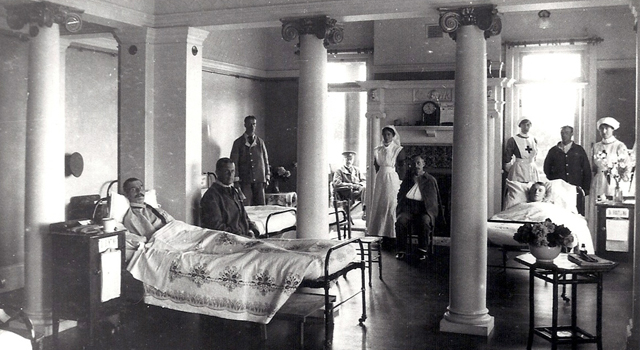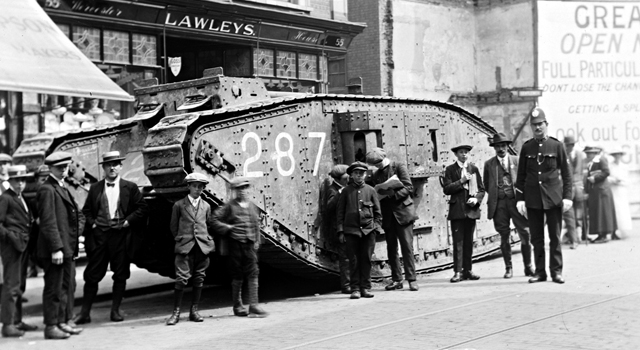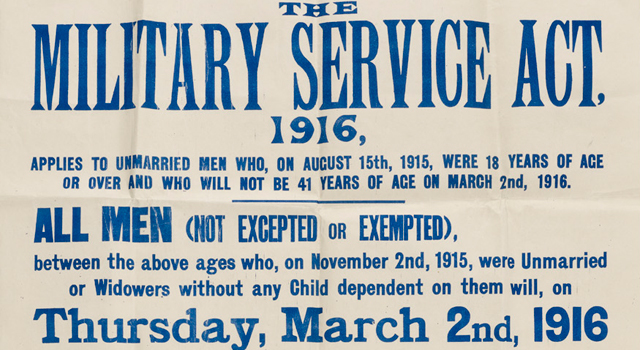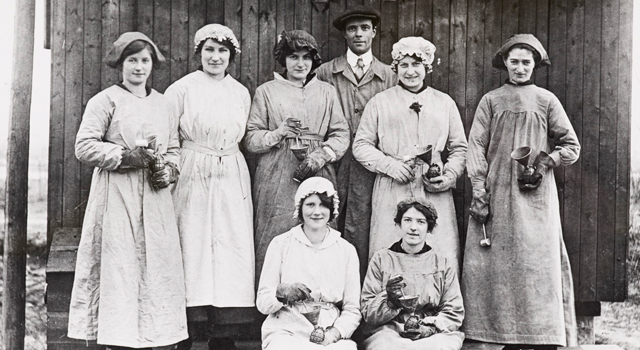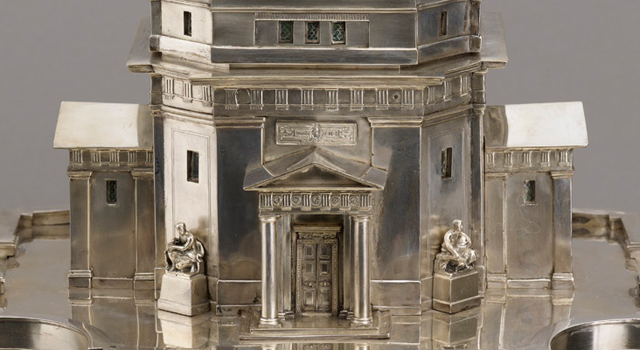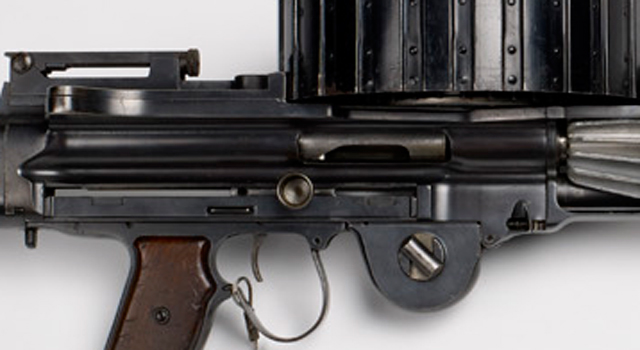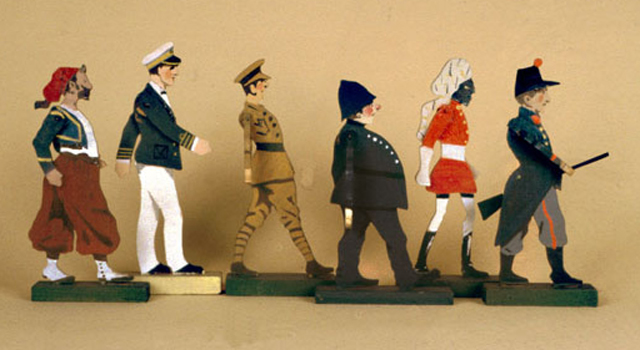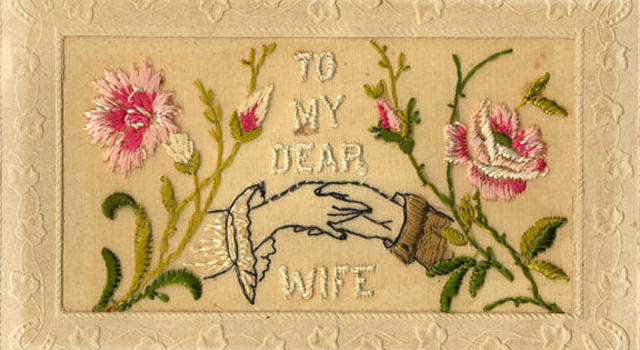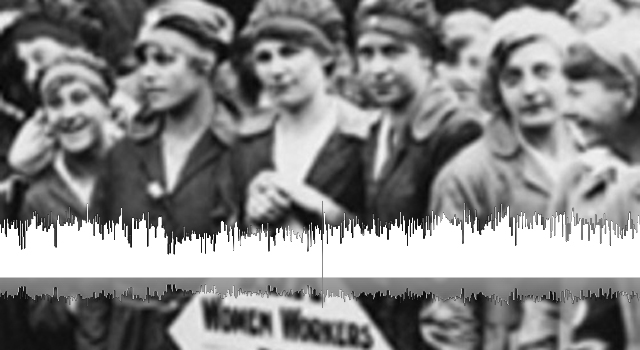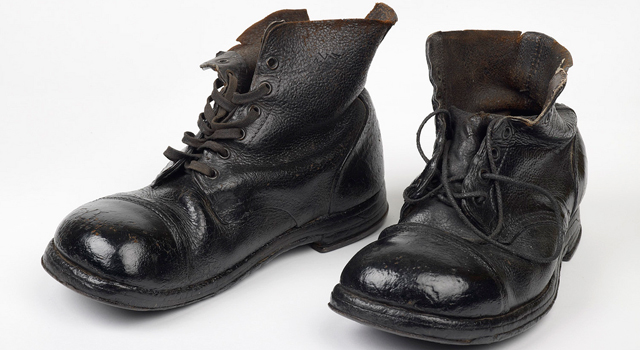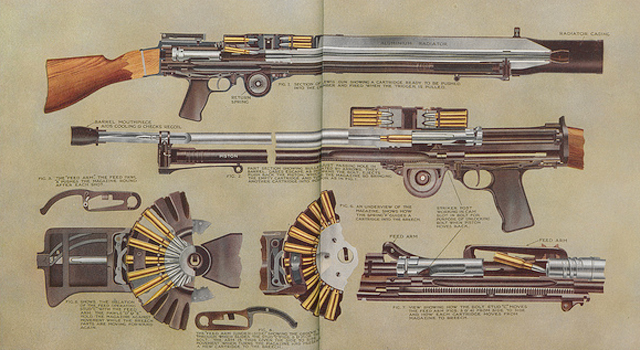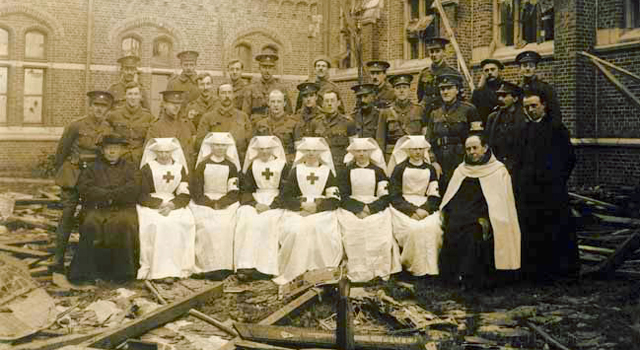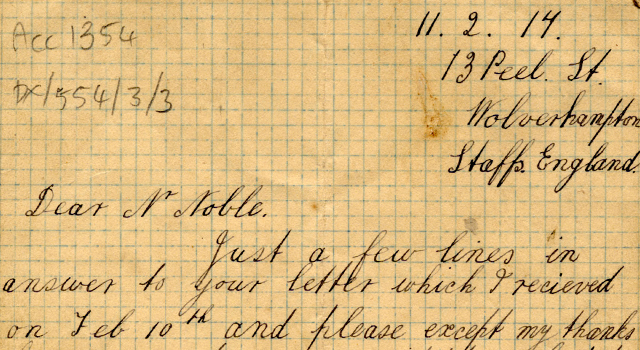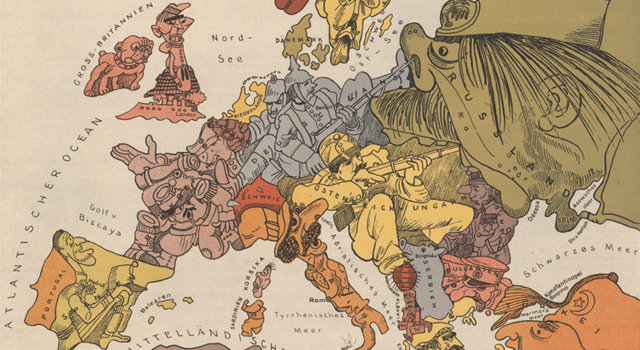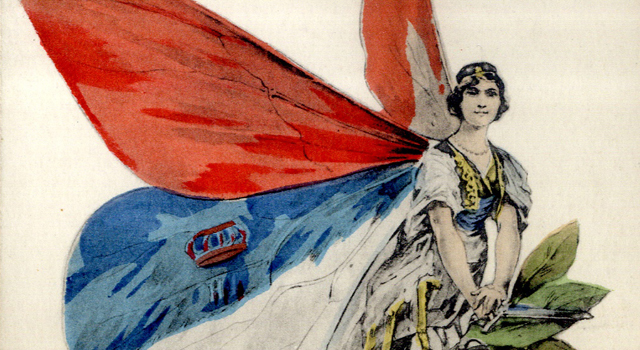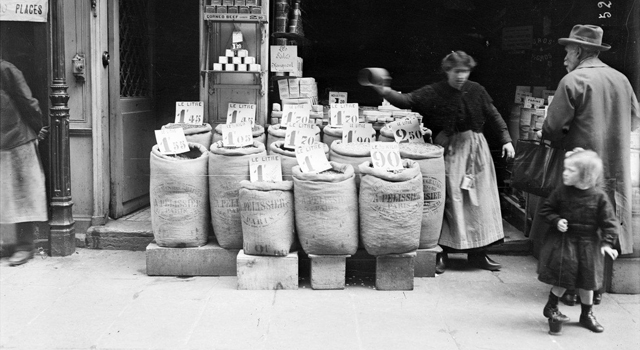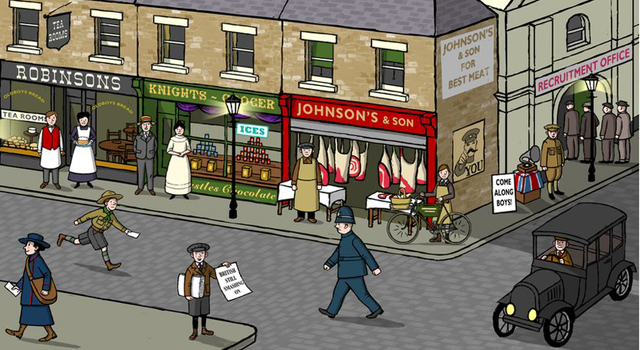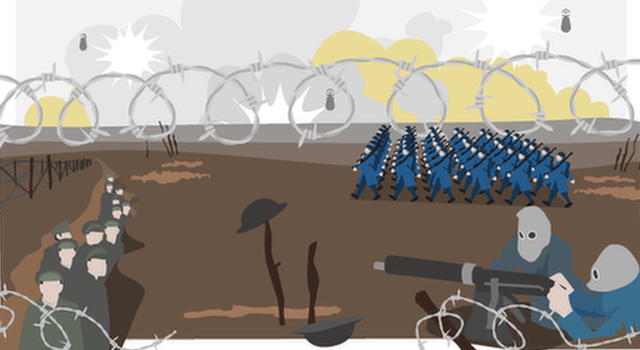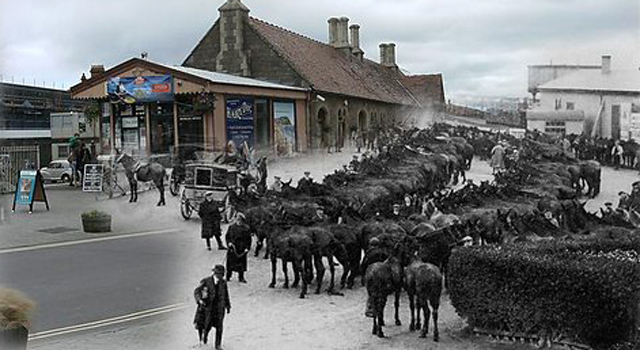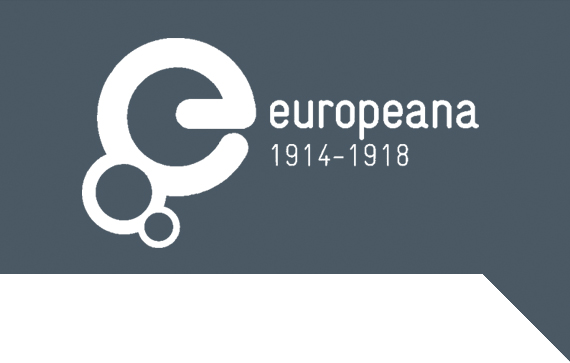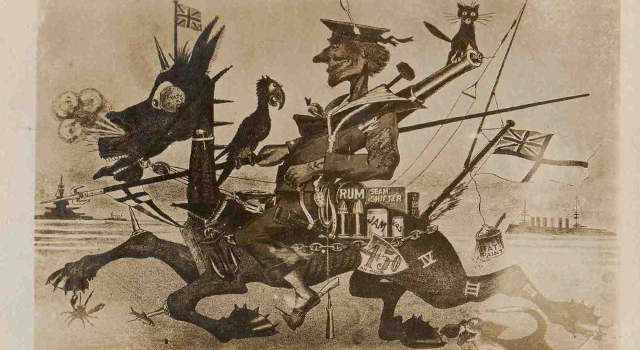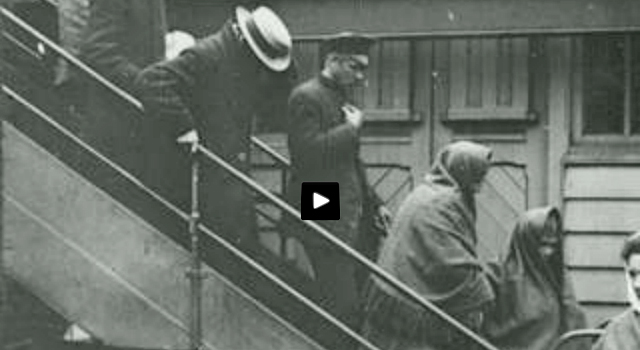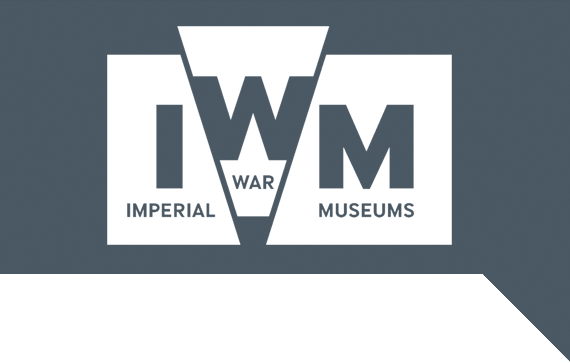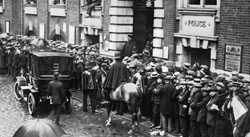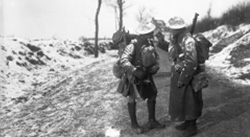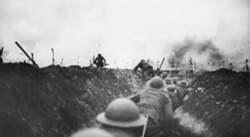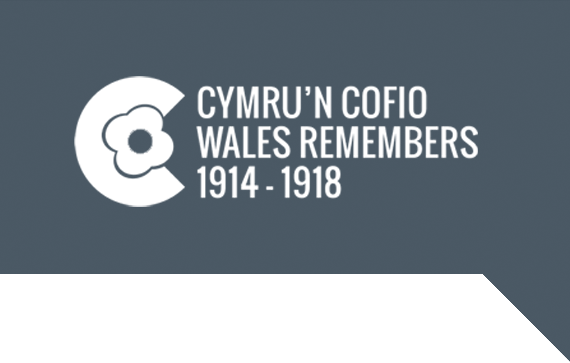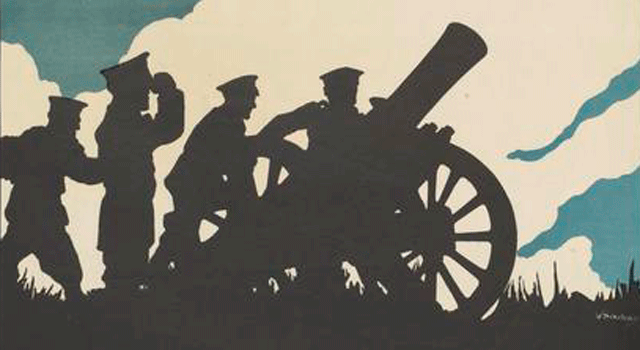Articles
No Comments
By Voices
On 20, Mar 2014 | No Comments | In Resources | By Voices
Worcestershire World War 100
Led by Worcestershire Archive and Archaeology Service (WAAS), this HLF project brings together the county of Worcestershire to involve communities in uncovering more about how the First World War impacted on every town, village and family across the county.
From stories of soldiers and their families, the impact of the conflict on healthcare in the county, to the role of local women on the home front, the project will offer the chance to learn about the technological, social, economic, political and medical developments in a time of trauma and crisis that still have influence on our lives today.
Organisations partnering with the WAAS include a range of local museums, some of which have a particular interest in the First World War and together they will host themed exhibitions at a variety of county-wide venues on subjects such as the battles of Gheluvelt, Neuve Chappelle and the Somme, the impact of the war on mental health, the role of notable people such as Vesta Tilley and Reverend Studdert-Kennedy, and life on the home front.
- The Mayor and Worcester City Council
- Museums Worcestershire
- University of Worcester
- Worcester Cathedral
- Worcester Regimental Museum
- Worcester Yeomanry Cavalry Museum Trust
- George Marshall Medical Museum
- The Infirmary (University of Worcester)
- Tudor House, Worcester Museum of Local Life
- Elgar Birthplace Museum
- Avoncroft Museum
- Royal Worcester Porcelain Museum
![Mess Tin and leather belt [The Infirmary, University of Worcester]](http://www.voicesofwarandpeace.org/wp-content/uploads/2014/03/mess-tin.jpg) The Infirmary is an interactive exhibition at the University of Worcester’s City Campus combining history, science, art and technology to explore the medical stories of one of England’s oldest infirmaries.
The Infirmary is an interactive exhibition at the University of Worcester’s City Campus combining history, science, art and technology to explore the medical stories of one of England’s oldest infirmaries.
A mess tin is an important piece of equipment in every soldier’s kit. Lt. Col. G. H. Goddard’s served as a medical officer in World War 1 and his dented tin reminds us of its regular use. His family donated a rich collection of artefacts including camp bed, uniforms, books and medical instruments used. They help us paint a vivid picture of frontline activities for medical men in the war.
You can see the mess tin and a selection of Mr R Goddard’s donation at The Infirmary at University of Worcester’s City Campus.
![Battenhall Mount VAD Hospital [George Marshall Medical Museum]](http://www.voicesofwarandpeace.org/wp-content/uploads/2014/03/vad-1100.jpg) George Marshall Medical Museum is home to a fascinating collection of artefacts which illustrate the way that medicine and health care have developed over the past 250 years. There is plenty to see in the Museum, including a collection of death masks, a reconstructed apothecary’s shop and a 19th century operating theatre. The Museum also holds a fascinating collection of medical books, photographs and oral histories.
George Marshall Medical Museum is home to a fascinating collection of artefacts which illustrate the way that medicine and health care have developed over the past 250 years. There is plenty to see in the Museum, including a collection of death masks, a reconstructed apothecary’s shop and a 19th century operating theatre. The Museum also holds a fascinating collection of medical books, photographs and oral histories.
This photograph was taken inside the Battenhall Mount VAD (Voluntary Aid Detachment) Hospital circa 1915-1917 after the first wounded soldiers arrived for their convalescence in the summer of 1915 from Shrub Hill station. This building is now a private school, and this particular room is now the school’s library. The photograph offers a unique glimpse into a single moment in time and gives us an excellent visual opportunity to begin to illustrate to members of the public what VAD hospitals might have looked like.
![Cynthia Carlton Tank [Worcestershire Archives and Archaeology Service]](http://www.voicesofwarandpeace.org/wp-content/uploads/2014/03/tank-1100.jpg) Worcestershire Archives and Archaeology Service works to protect, preserve, manage, record, interpret and promote the history and historic environment of Worcestershire. All types of research on Worcestershire people and places can be undertaken using the comprehensive resources of the Historic Environment Record and our diverse archive collections.
Worcestershire Archives and Archaeology Service works to protect, preserve, manage, record, interpret and promote the history and historic environment of Worcestershire. All types of research on Worcestershire people and places can be undertaken using the comprehensive resources of the Historic Environment Record and our diverse archive collections.
Following the death of his son Laurence Barnard Carlton on 9 August 1915 in Turkey, his father Sir Arthur Carlton devoted his energies into raising money for the war. He raised money to purchase this tank ‘Cynthia Carlton’, which was driven through the streets of Worcester and after the war it was returned to the City. The tank is named after Laurence’s sister who was a Hollywood actress. The Carlton family owned a number of Theatre Royals across the country.
The image is taken from a collection of glass plate negatives from Worcester City Library, their provenance is unknown and they are part of a large, long term project to digitise the photographic holdings.
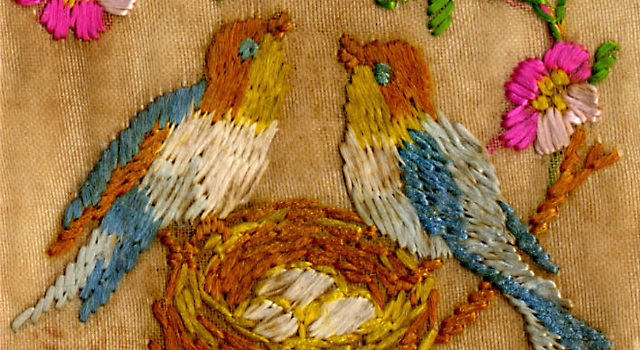
No Comments
By Voices
On 12, Mar 2014 | No Comments | In Resources | By Voices
Wolverhampton City Archives
In commemoration of the anniversary of the First World War, Wolverhampton City Archives are sharing the stories, images and details of the local men and women who were involved, both at home and abroad. These resources are being published on their blog Wolverhampton’s War – Lost Voices from the Great War.
Letters home from the trenches, diaries, newspaper entries and tales from school log books, all help to build up a picture of what people experienced during the Great War. Here are a couple of personal stories about Wolverhampton residents Jesse Hill and Maud Fellows, who were two victims of the Great War; one killed in the trenches, the other at home.
![Photograph of Jesse Hill [WAVE: DX554]](http://www.voicesofwarandpeace.org/wp-content/uploads/2014/03/jesse-hill.jpg) Jesse Hill was a 28-year-old fitter who lived in Wolverhampton’s Peel Street with his wife, Maggie and two children, Jesse and Harold. He enlisted on December 10th 1915 and joined the South West Borderers regiment.
Jesse Hill was a 28-year-old fitter who lived in Wolverhampton’s Peel Street with his wife, Maggie and two children, Jesse and Harold. He enlisted on December 10th 1915 and joined the South West Borderers regiment.
![Embroidered Postcard [WAVE: DX554]](http://www.voicesofwarandpeace.org/wp-content/uploads/2014/03/postcard.jpg) The Archives holds a number of items related to Jesse including some photos, letters and an embroidered postcard for ‘my dear children’.
The Archives holds a number of items related to Jesse including some photos, letters and an embroidered postcard for ‘my dear children’.
![Letter to Maggie Hill [WAVE: DX554/3/2]](http://www.voicesofwarandpeace.org/wp-content/uploads/2014/03/hill-letter-1.jpg) The collection also contains a letter sent to Maggie from a Sergeant Noble in February 1917 informing her that Jesse had been killed on January 29th. Sergeant Noble describes Jesse as ‘one of my most reliable men, always cheerful under adverse circumstances and indeed a great credit to me’. Maggie’s response can also be found in the collection in which she thanks Noble for writing to her and agrees that ‘it was best to tell me the truth than keep me waiting in suspense’. Maggie also asks if Noble can tell her whether Jesse ‘was killed outright or wether [sic] he lived only for a few moments to enable him to say a few words about his home and family’. The letter was returned to Maggie, which suggests that she never received her answer.
The collection also contains a letter sent to Maggie from a Sergeant Noble in February 1917 informing her that Jesse had been killed on January 29th. Sergeant Noble describes Jesse as ‘one of my most reliable men, always cheerful under adverse circumstances and indeed a great credit to me’. Maggie’s response can also be found in the collection in which she thanks Noble for writing to her and agrees that ‘it was best to tell me the truth than keep me waiting in suspense’. Maggie also asks if Noble can tell her whether Jesse ‘was killed outright or wether [sic] he lived only for a few moments to enable him to say a few words about his home and family’. The letter was returned to Maggie, which suggests that she never received her answer.
![Jesse Hill's 'Small Book' [WAVE: DX554/1]](http://www.voicesofwarandpeace.org/wp-content/uploads/2014/03/small-book-2.jpg) The family believed that Jesse was killed by bullet fire and the damage visible on Jesse’s small book seems to indicate this was the case.
The family believed that Jesse was killed by bullet fire and the damage visible on Jesse’s small book seems to indicate this was the case.
![Coroner's Report for Maud Fellows, 15 February 1916 [WAVE: T/CR/1916]](http://www.voicesofwarandpeace.org/wp-content/uploads/2014/03/t-cr_1916-1.jpg) Maud Fellows was in her twenties when she was killed during one of the Zeppelin attacks on the Black Country. A 24-year-old domestic servant from Bradley near Bilston, she was out walking with her sweetheart, William, one evening in January 1916 when they ‘heard something like thunder and lightning’ and had taken shelter at a place on the canal side. A witness describes how the bomb caused all the roof slates of a nearby building to fall off and a massive hole five feet deep in the tow path. William was killed outright but Maud was still alive. She was taken to Wolverhampton Hospital and treated by a Dr Hannah Grace Moreland but sadly died on the 12th of February of septicaemia caused by her injuries.
Maud Fellows was in her twenties when she was killed during one of the Zeppelin attacks on the Black Country. A 24-year-old domestic servant from Bradley near Bilston, she was out walking with her sweetheart, William, one evening in January 1916 when they ‘heard something like thunder and lightning’ and had taken shelter at a place on the canal side. A witness describes how the bomb caused all the roof slates of a nearby building to fall off and a massive hole five feet deep in the tow path. William was killed outright but Maud was still alive. She was taken to Wolverhampton Hospital and treated by a Dr Hannah Grace Moreland but sadly died on the 12th of February of septicaemia caused by her injuries.
![Coroner's Inquest for Maud Fellows, 15 February 1916 [WAVE: T/CR/1916]](http://www.voicesofwarandpeace.org/wp-content/uploads/2014/03/t-cr_1916-1b.jpg) The Coroner’s Inquest records that the jury were of the opinion that ‘that the Kaiser and the Crown Prince are guilty of the murder of Maud Fellows as accessories before the fact’.
The Coroner’s Inquest records that the jury were of the opinion that ‘that the Kaiser and the Crown Prince are guilty of the murder of Maud Fellows as accessories before the fact’.
For more stories from the archives, go to Wolverhampton’s War – Lost Voices from the Great War.
3 Comments
By Voices
On 07, Mar 2014 | 3 Comments | In Cities Resources | By Voices
Birmingham and WW1: Highlights from Birmingham History Galleries
Birmingham its people, its history draws upon the city’s unique and world class collections to bring Birmingham’s history to life. There are five galleries to explore, tracing the development of Birmingham from a small medieval settlement to a city of global significance.
No Comments
By Voices
On 01, Mar 2014 | No Comments | In Cities Resources | By Voices
Wolverhampton Art Gallery
Wolverhampton Art Gallery holds a range of objects that relate to the First World War, from embroidered postcards that kept a connection between the Home Front and the trenches, to paintings and drawings that reflect upon it both immediately and many years after its end.
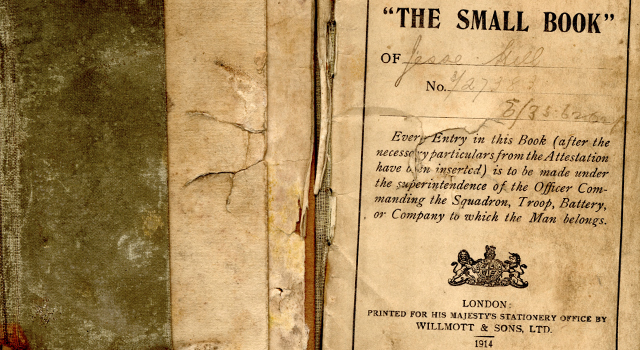
4 Comments
By Voices
On 21, Feb 2014 | 4 Comments | In Resources | By Voices
Resources
Here you will find links to local and national online resources on the First World War.

- Birmingham and WW1: Highlights from Birmingham History Galleries
Birmingham its people, its history draws upon the city’s unique and world class collections to bring Birmingham’s history to life…
- Birmingham Museums First World War Sound Archive
A number of Birmingham men and women were interviewed in the 1980s about their experiences during the First World War for the exhibition ‘We Were There’…
- Birmingham and the First World War Flickr gallery
A collection of objects associated with Birmingham and its people during the First World War.
- On the Suburban Front: World War One in South West Birmingham
This online exhibition features archive and rare book material from the Cadbury Research Library, Special Collections.
- The Friends Ambulance Unit during the First World War
Flickr gallery of images from Lawrence Cadbury’s collection. The FAU was a volunteer ambulance service, staffed mainly by Quaker men and women, which operated in Northern France and Belgium during WW1.
- WW1 Archival Resources in the Cadbury Research Library: Special Collections
List of records, including archives of: the YMCA; Chamberlain family; Church Missionary Society; Donnithorne family; Bishop Llewellyn Henry Gwynne; The Courtney Collection; Prince Vasily Alexandrovich Dolgorukov; Ernest Watson, and; Laurence Cadbury.
- Lest We Forget
Online version of ‘Original’; the University of Birmingham’s flagship research magazine. The ‘Lest We Forget’ edition focuses on the centenary.
- Forward 100: Birmingham At War
A joint project between BBC Birmingham and the University of Birmingham, to mark the First World War centenary, to form an interactive exhibition in BBC Birmingham’s Public Space.
- WW1 Stories from Wolverhampton City Archives
In commemoration, Wolverhampton City Archives are sharing the stories, images and details of the local men and women who were involved…
- Selected Objects from Wolverhampton Art Gallery
The Gallery holds a range of objects that relate to the First World War, from embroidered postcards…
- Wolverhampton’s War – Lost Voices from the Great War
See letters home from the trenches, diaries, newspaper entries and tales from school log books, in this blog by Wolverhampton City Archives.
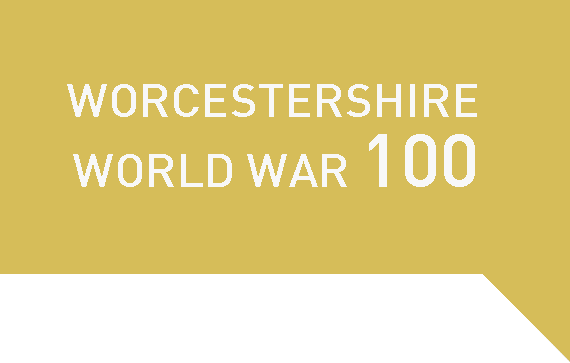
- Highlights from Worcestershire Collections
From stories of soldiers and their families, the impact of the conflict on healthcare in the county, to the role of local women on the home front, the project will offer the chance to learn…
- British Library World War One Articles
Explore over 50 articles on World War One written by leading experts.
- British Library World War One Themes
Themes include: Origins, outbreak and conclusions; Race, empire and colonial troops; Civilians; Propaganda; Representation and memory; and Historical debates.
- British Library World War One Collection Items
Discover World War One historical sources from both sides of the conflict, contributed by institutions from across Europe.
- iWonder Interactive Guides
Discover the BBC’s first interactive guides to WW1 curated by experts and BBC Talent – allowing you to explore new perspectives on the war.
- BBC Resources for Primary Schools
Learn what life was like for children during WW1 through a series of illustrated learning guides.
- BBC Resources for Secondary Schools
Bitesize study support for World War One history and poetry, and more.
- BBC World War One at Home
The BBC has partnered with IWM and the AHRC to produce a growing collection of stories that show how WW1 affected the people and places of the UK and Ireland, including themes on Women Trailblazers and Working for the War. Also see the World War One at Home Tour of live events around the UK until September 2014.
Europeana 1914-1918 mixes resources from libraries and archives across the globe with memories and memorabilia from families throughout Europe. Explore stories, films and historical material about the First World War and contribute your own family history.
- Europeana 1914-1918 Resources
Browse original source material from across Europe, from diaries and letters to official documents, photographs and postcards. Subjects include Remembrance, Propaganda, Women, Trench Life, Prisoners of War, Aerial and Naval Warfare, and the Fronts.
- The Europeana 1914-1918 Film Collection
Thanks to a partnership with the European Film Gateway, Europeana now has an astonishing film collection with over 660 hours of WW1 audiovisual material.
To mark the First World War Centenary, IWM is leading the First World War Centenary Partnership and Programme and has created a range of online initiatives, making all types of digital assets available.
- Help IWM reveal 8 million life stories in Lives of the First World War.
- Listen to the Voices of the First World War podcast series.
- Explore History Online through the voices, photographs, letters and mementoes of those who were there.
- Discover the Whose Remembrance? project about colonial troops.
- Check out the IWM learning resources, a few of which are listed here below:
- Recruitment and Conscription
A selection of objects from across IWM collections to help you understand more about the issue of recruitment and conscription in the UK and overseas during the First World War.
- The Empire Called to Arms
A selection of objects from across IWM collections to help you understand more about different nationalities and their contribution to the First World War.
- Life in the Trenches
A selection of objects from across IWM collections to help you understand more about living and fighting in the trenches.
- Cymru 1914
Digitised primary sources relating to the First World War from the Libraries, Special Collections and Archives of Wales. The digital collection reveals the often hidden history of the First World War as it impacted all aspects of Welsh life, language and culture.
Other Websites of Note
- Africans and West Indians at War is supported by the HLF and the project website showcases galleries of photographs, drawings and paintings of West Indian and African soldiers and their equipment.
- Ancestry (subscription site) includes a range of WW1 records as well as the 1911 census.
- 14-18 NOW is a major cultural programme taking place across the UK to mark the centenary of the First World War.
- Beyond the Trenches aims to help bring together the many strands of research being undertaken on the World War and its legacy and to prompt discussion and debate.
- The British Council presents findings from an international survey in seven countries (Egypt, France, Germany, India, Turkey, Russia and the UK) carried out by YouGov in its report on the First World War. It explores people’s perceptions and knowledge about the First World War and highlights the truly global nature of the conflict and its lasting legacy. The report also identifies that international perceptions of the UK today are, in part, still influenced by Britain’s role in the First World War.
- British Pathé began recording every aspect of global culture and news since the invention of the moving image in the 1890s. All 85,000 newsreels are now searchable and viewable on YouTube. This equates to 3,500 hours of filmed history.
- British Red Cross has a searchable database of WW1 volunteers and Red Cross hospitals. The website also has an abundance of information on what the Red Cross did during the war, auxiliary hospitals, and volunteers including famous names such as Agatha Christie.
- Choices Then and Now is a WW1 centenary project organised by the Peace Museum in Bradford, designed for teachers, community groups and those working in the museum, heritage and voluntary sectors. The website provides a platform for exploring days that changed the world, choices then and now and the sharing of ideas, learning achievements, hidden histories and untold stories.
- Commonwealth War Graves Commission website commemorates the 1,700,000 men and women of the Commonwealth forces who died in the two world wars. Their Register records details of Commonwealth war dead so that graves or names on memorials can be located.
- First World War Centenary Programme 2014-2018 Guide to Engaging Local Communities produced by the Department for Culture Media & Sport.
- First World War Memorials Programme: conserving and protecting UK War Memorials
In commemoration of the centenary of the First World War the Department for Culture Media and Sport has made a £4.5 million fund available for the conservation and protection of war memorials. The First World War Memorials Programme sees Historic England, in partnership with Civic Voice, IWM and War Memorials Trust working with the public on a programme of recording, research, conservation and listing that ensures war memorials across Britain are protected and the people they commemorate are remembered.To find out more about the programme and how your local community can access the funds they need to repair, protect and conserve war memorials please visit: http://ukwarmemorials.org/ or contact warmemorials@historicengland.org.uk - The Friends Ambulance Unit (1914-1919) was a civilian volunteer ambulance service set up by a group of Quakers during World War I. The Library of the Religious Society of Friends (Quakers) holds the archive of the Friends Ambulance Unit.
- Historypin is a global community collaborating around history and is a way for millions of people to come together, from across different generations, cultures and places, to share small glimpses of the past and to build up the huge story of human history.
- Jewish Artists and the First World War, Ben Uri Gallery. In this collection are two essays and eight profiles of Jewish artists from the First World War period, written and curated by the Ben Uri Art Gallery and Museum.
- Musee Ligne Hindenburg traces the forgotten events mainly related to the First World War in the area of the Artois (Valley of the Sensee – Cojeul Valley), and more precisely to the famous Hindenburg Line.
- National WW1 Memorial & Museum in collaboration with the United States World War One Commission have produced WW1 Education Resources, including primary sources from around the world that you can use for free to help educate others about the First World War, and online exhibitions.
- Mutiny by Sweet Patootee. This documentary looks at the British Caribbean experience of the First World War and its legacies, as revealed by the last surviving veterans of the British West Indies Regiment. The film is formed of archival materials, drama reconstructions and eye-witness and expert interviews shot in Jamaica, Cuba, Guyana, Barbados, St. Lucia, Italy and the UK.
- Peace Pledge Union have been campaigning against war since 1934. There are a number of WW1-related resources on their website, including Remembering the Men Who Said No
- People’s History Museum Manchester, have a downloadable guide relating to WW1 material in the archive.
- Quakers in Britain has produced WW1 school resources; a learning guide on ‘Conscience‘ aimed at primary schools and another on ‘Conviction‘ for secondary schools.
- Quaker Strongrooms blog is written by the staff of the Library of the Society of Friends. They aim to introduce you to their unique collections and their preservation, and bring you up to date news about the Library, including new accessions, service developments and details of forthcoming events.
- Remembering World War I: A Research and Learning Collection from Routledge brings together a variety of interdisciplinary perspectives to help shine light on World War I in its political, military, cultural, economic, geographical and human dimensions. Includes interviews, journals, and a reading list.
- Remembering the Great War in Luxembourg digital exhibition is a project developed by the C2DH – Centre for Contemporary and Digital History of the University of Luxembourg with the objective of addressing an important but neglected and understudied period in the history of the Grand Duchy.
- Scotland’s War project has its origins in Edinburgh’s War 1914-1919, a University of Edinburgh funded initiative which ran from 2008-20014. The content from Edinburgh’s War has now been integrated into this website. Scotland’s War welcomes contributions on any information relating to Scotland and the Scots in WW1 and its aftermath.
- UK Association for the History of Nursing aims to promote the development and advancement of Nursing History. This is achieved through scholarly work and public outreach. Further, the Association brings together individuals and associations in order to provide mutual support and opportunities for collaboration.
- University of Glasgow World War One Commemoration lists resources for WW1 study by highlighting relevant university and personal collections and a link to the University’s Roll of Honour that features those who served.
- Wellington’s War was funded by the National Lottery Heritage Fund and explores Great War legacy sites in Wellington, Shropshire.
- White Feather Diaries is a social media storytelling project marking the centenary of World War I. It offers an insight into overlooked aspects of war: resistance to killing and the relief of suffering.
- Women’s Work by Women & Theatre explored the experiences of female factory workers during WWI, specifically those in the small arms sector. Supported by the Heritage Lottery Fund, Women & Theatre worked with members of the Small Heath community in Birmingham to develop the project. Participants went on a journey to research and develop a theatre production and touring exhibition that brought to light the ups and downs of life for those women who toiled in armaments and munitions factories on the Home Front.
- War Archives is a YouTube gold mine of military footage, including some wonderfully rare war reels too, all taken from the colossal archive British Pathé. From the Boer War to the World Wars to the Cold War; Pathé News captured many of the most momentous events in 20th century war history.
TV and Radio Programmes
- Viewpoint: how should we remember a war? is an edited version of Dr Sam Edwards’ Four Thought, a BBC Radio 4 broadcast. Sam is part of the Voices of War and Peace research network.
- God and the Great War is a Radio 3 programme in which Frank Cottrell Boyce explores the impact of the First World War on religious belief and practice on the military front and at home. Broadcast on Sunday 9 November 2014 and available online for a year.
- What can today’s soldiers learn from WW1? is a BBC iWonder programme presented by Dr Jonathan Boff, Centre for War Studies, Department of History, University of Birmingham; a member of the Voices research network.
Research Papers, Articles, Learning Guides, Exhibition Panels, etc.
- An information “black hole”: World War I in Africa, in László Z. Karvalics (ed), Information History of the First World War UNESCO / L’Harmattan Publishing (2016), written by Marika Sherwood.
- A Once in a Century Opportunity? Some Personal Reflections on the Centenary of the First World War, British Journal for Military History Vol.1 No.12 (2014), written by Gary Sheffield, University of Wolverhampton; a member of the Voices research network.
- Beyond the Battlefields: Käthe Buchler’s Photographs of Germany in the Great War and the University of Birmingham and the Great War is an illustrated pamphlet supporting the exhibition of photographs and artefacts held in the University of Birmingham, 20 October 2017 – 14 January 2018. (Please note that this PDF may take several seconds to load).
- Beyond Commemoration: Community, Collaboration and Legacies of the First World War is an AHRC funded project which aimed to make visible the work of citizen historians involved in commemorative activity between 2014 and 2019. Drawing on the knowledge and experiences of the two of the First World War Engagement Centres, Voices of War and Peace and Everyday Lives, we have worked with community activists, academics, and independent scholars to produce a series of four open access downloadable legacy-themed e-books: Remaking Histories of the Nation; Children and Conflict; Women and War; and War and Aftermath. (Please note that the PDFs may take several seconds to load).
- Birmingham Children of War is a learning guide for researching children’s lives in the First World War, produced by the Friends of Birmingham Archives and Heritage with funding from the Heritage Lottery Fund.
- Birmingham First World War City Tour Map is a guide produced by Birmingham WW1 History Bus with funding from the Heritage Lottery Fund. The route around the city features sites relating to Zeppelins and Armaments, the Quakers and conscientious objectors, War hospitals, women’s stories and Belgian Refugees.
- Caribbean Soldiers on the Western Front is a booklet, produced by the African Heritage Forum, about the experiences of the Caribbean men who enlisted to fight in the First World War, and who showed their patriotism and loyalty.
- Connected Histories: Muslims in the First World War features the stories of descendants of Muslims who served, as well as an insight into the significant contribution of Muslims to the British War Effort. (Please note that this PDF may take several seconds to load).
- Honouring VC Indian Soldiers in World War One exhibition telling the stories of South Asian soldiers of the British Indian Army who were awarded the Victoria Cross during the First World War. (Please note that this PDF may take several seconds to load).
- Making Histories, Sharing Histories: Putting University-Community Collaboration Into Practice. This booklet, produced by the Voices of War and Peace and Everyday Lives WW1 Engagement Centres, shows what collaboration might look or feel like, and how heritage can enable diverse communities to tell their own stories of belonging.
- Scottish Women’s Hospitals exhibition panels produced by the University of Glasgow. Together, the panels provide a short history of the formation of the Women’s Hospitals and the role of female medical students and women doctors during the Great War. (Please note that this PDF can take up to 30 seconds to load, depending upon your connection speed).
- Stories of Omission: Conflict and the experience of Black soldiers is a learning guide that looks at resources that tell the, mostly omitted, stories of men from the Caribbean, America and Africa who enlisted to fight in the First World War.
- UK Association for the History of Nursing Bulletin November 2017 includes a number of articles on WW1.
- Untold Stories: Birmingham’s Wounded Soldiers from World War One is a learning guide produced by the People’s Heritage Co-operative with Heritage Lottery funding. The guide focuses on sites of treatment around the city, along with illustrated case study stories and a list of resources.
- WW1 Food Fight is a free Children’s eCookbook with colourful illustrations by students of the Digital Arts Centre, University of Worcester. The few seconds it takes to download is worth the wait. Find out more..


